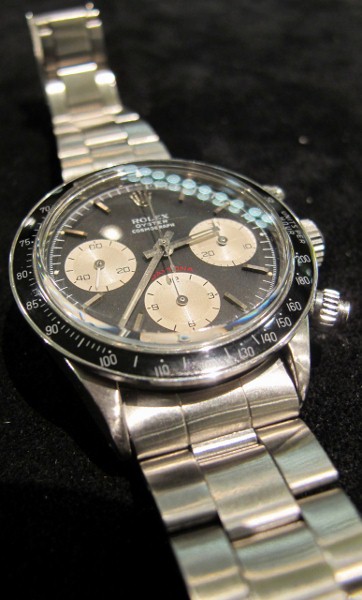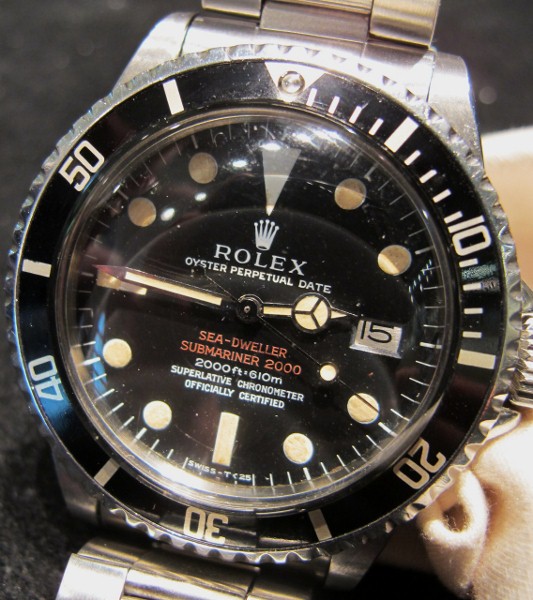 Please enjoy the following article by Jason Cormier of Matt Baily who sells watches in Canada. He is a vintage watch lover (lots of love to Rolex it seems) and natural born historian.
Please enjoy the following article by Jason Cormier of Matt Baily who sells watches in Canada. He is a vintage watch lover (lots of love to Rolex it seems) and natural born historian.
In today’s watch market, buyers are spoiled for choice. You can have any variation, any function, any material, and in any price category. And within each category you will find dozens of brands offering competing products. It’s overwhelming, but it means you will never be at a loss when looking for that special watch (or five).
Some of us prefer to reject that choice altogether and go for the old junk.
Yes, I am a vintage watch lover. To a modern watch geek this obsession with the old can appear curious. To the average layperson it is absolute madness. I am the sort of lunatic who seeks out unpolished cases, perfectly faded tritium markers, and esoteric stuff like original crystals and stamped warranty papers. I am an unabashed and unapologetic vintage nut. And I would like to make a case for my obsession; not to justify it or convince anyone it is somehow superior, but merely to explain the passion that drives me to seek out vintage watches rather than purchasing new ones.
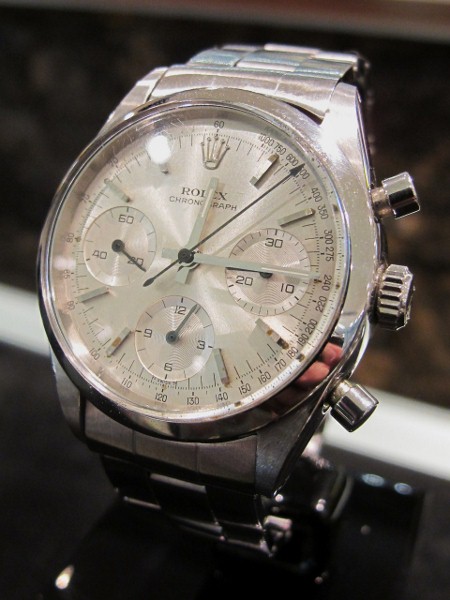
I’ve long followed Ariel Adams and John Biggs on the blogosphere. I am a fan of their candid and straightforward opinions, and their podcast together is a real treat for watch lovers who want something more than the typical industry press-release drivel. But I have taken exception to their attitudes towards vintage watches. Ariel and John are clear that they much prefer new watches to old ones, and have a hard time understanding why anyone would chose to buy vintage. That’s where I come in — I’m here to offer the counterpoint on behalf of vintage watch lovers and collectors.
Why would anyone want to collect old watches when the new stuff is far superior in terms of finishing and engineering? Everyone has his or her own reasons. Some older collectors purchase pieces that seduced them during their youth, but they couldn’t afford at the time. Others love to complete collections of a particular brand or model, obsessively seeking out different variations. Others still want to own rare pieces that are extremely exclusive and historically important. In my case, I have two main reasons — firstly I am a historian, secondly I always seek out things that are distinctive.
I have a degree in history and pieces with historical significance have always had a particular allure to me. Something about owning an object from another period that has witnessed decades of use, and perhaps been related to some important event, is a very romantic notion to me. I own a vintage Omega Speedmaster Professional because of its direct connection to the space program and the moon landings. I lust after an early Rolex GMT Master for its relation to aviation… and because my favourite author, the ever-gonzo Hunter S. Thompson, wore two GMT Masters at once. The other reason, distinctiveness, is the exclusivity of owning a vintage piece. Anyone can walk into a dealer and purchase a new watch. Vintage watches are much more exclusive and elusive, not for their prices, but for the small number of collectors who wear and trade them. Finding a good vintage piece requires hunting, research, and sifting through dozens of examples until you find “the one”. Some people seek out grail watches — for me every vintage watch is a grail piece that needs to be obsessively hunted down. The thrill is as much in the chase as it is in owning the damned thing.
Some vintage lovers will proclaim, loudly, that vintage was better than all this modern mass-produced junk. They pine for the good ol’ days where Swiss farmers finished wheels and cogs in their attics during the winter, using the finest tools wrapped in unicorn hair and only assembling components on the thighs of beautiful virgins, and say that modern mass production has nothing on good old-fashioned hand craftsmanship. I disagree. I work with watches on a daily basis and I have no delusions about vintage stuff. It is not better. Often times it is worse in terms of performance, reliability and finishing. For highly collectible pieces the price does not reflect the essential value of the piece, it only reflects the rarity. That isn’t to say that vintage is garbage, far from it. You can have a reliable, accurate daily watch that was made several decades ago. But in terms of finishing and an overall feel of quality, new stuff wins hands down. You need to realize this when collecting vintage — just because prices reach into the stratosphere doesn’t mean the item will be astonishingly well made. It usually isn’t the case.

Being a vintage collector means having a different set of criteria for what you expect from watches. Where many people would gravitate towards a perfectly restored and polished examples, a true collector will scoff at those pristine rebuilds in favour of one that is entirely original (and probably well worn). This means the case was never re-polished, the dial and hands are original and nicely patina’d, and the bracelet is original to the watch. Finding a watch that is more than 20 years old with the original box and papers is a damn near religious experience, if you find one that is unmolested and completely original to boot it is a miracle.
If you can’t understand why this is important, then vintage probably isn’t for you – If every hairline scratch on your watch enrages you, or you obsessively scan over the watch with a loupe looking for tiny flaws, you are better off sticking to new pieces. This is usually what alienates people the most from vintage, the fact that old and beaten up is valued over new and pristine. Think of a concours restoration on a car versus a good running example that has never been restored. Collectors will go ga-ga over the original car, while the everyday person will gravitate towards the flawless nut-n-bolt restoration. Perfect originality is rare, and is thus desirable.
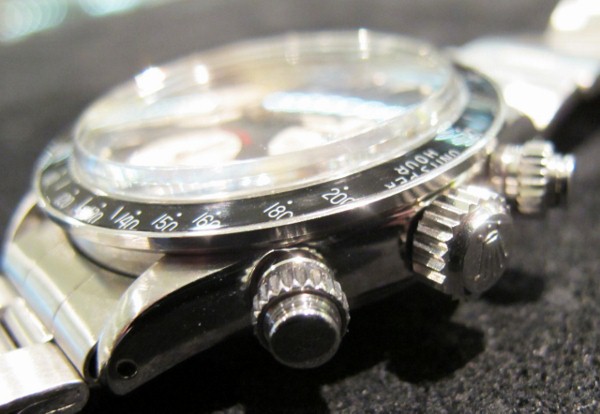
Ariel and John made a point in one of their podcasts — when collecting vintage, there is a lot of crap out there. And I agree. The market has shifted considerably since the 1970s. After the Quartz Crisis decimated the Swiss watch industry in the early 70s, mechanical movements were considered obsolete. In the 1980s and 1990s, the mechanical watch industry rebounded by focusing on the craftsmanship of fine mechanical movements (and aiming mechanical watches at the high-end market). Before the Quartz Crisis, mechanical movements were the only watch movements out there and had no such mystique outside of haute-complications.
Many inexpensive watches of yore were disposable commodities, like a modern Timex. Most were poorly made and were not at all impressive in terms of function or finishing. But with the emergence of quartz and the subsequent elevation of mechanical movements people are now viewing any mechanical watch as a luxury piece, no matter how awful it really is. Blame eBay and Antiques Roadshow for making people think that any old piece of junk is a potential fortune. Most people who get burned by the vintage market fall into the trap of buying junk, or are seduced by franken-pieces / fakes due to lack of research. I’ll admit that collecting vintage is not for the faint of heart and requires a lot of background information — which I find is most of the fun.
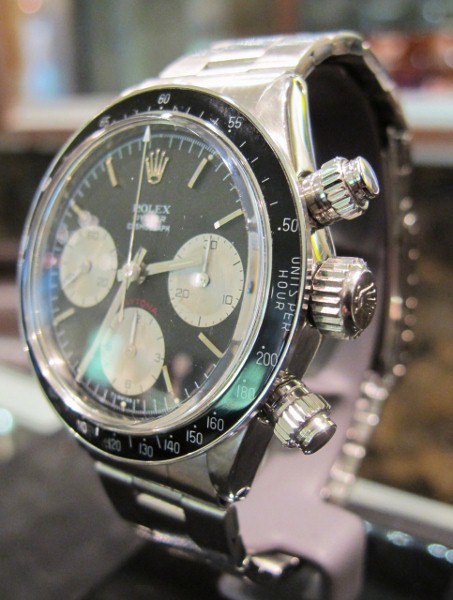
Collecting vintage is not for the uninitiated. I don’t recommend it to people with a casual interest in watches. You need to inform yourself and be aware of junk, fakes, aftermarket parts, disreputable sellers, poorly serviced movements and basket-cases, franken-watches cobbled from parts, etc. Today’s buyers have the advantage of reams of information available online for just about any marque. If you have an interest in a particular brand or model, start researching. You’ll be amazed at how much information you can find on websites, blogs and forums. You’ll also be amazed by how many horror stories are out there, which is good fodder for learning from the mistakes of others. It helps to find a reputable brick and mortar store that deals in pre-owned and vintage watches; if you build a relationship with a knowledgeable retailer you will be much less likely to get burned. You will also want to find a good watchmaker with a lot of experience, as it is inevitable that you will need to get your pieces serviced. Having a good watchmaker at your disposal can make the process much less painful and far less expensive.
I’m not here to try and convince anyone that vintage is better. If you look at it logically it doesn’t make sense at all — you will have far fewer headaches if you stick to new stuff with the backup of a manufacturer’s warranty and the support of a modern sales and service network. What I hope to have done is given a small glimpse of the passion I have for watches in general and how this has turned into a love of vintage pieces. I find it irritating when people dismiss vintage watch collecting out of hand. It takes a particular personality to enjoy vintage collecting. If you have that spark, run with it – if you don’t, then find your own niche. It’s a lot more fun to hunt down rare vintage items than it is walking into an authorize dealer and walking out with a watch. Loving vintage watches is all about passion — it can’t be rationalized or made logical. If you think about it, owning any high-end watch isn’t rational anyway. You can tell the time with your cell phone with perfect accuracy – why spend thousands on a device that tells time with obsolete and archaic technology? Why indeed.
-Thanks to Jason for this good read.-


